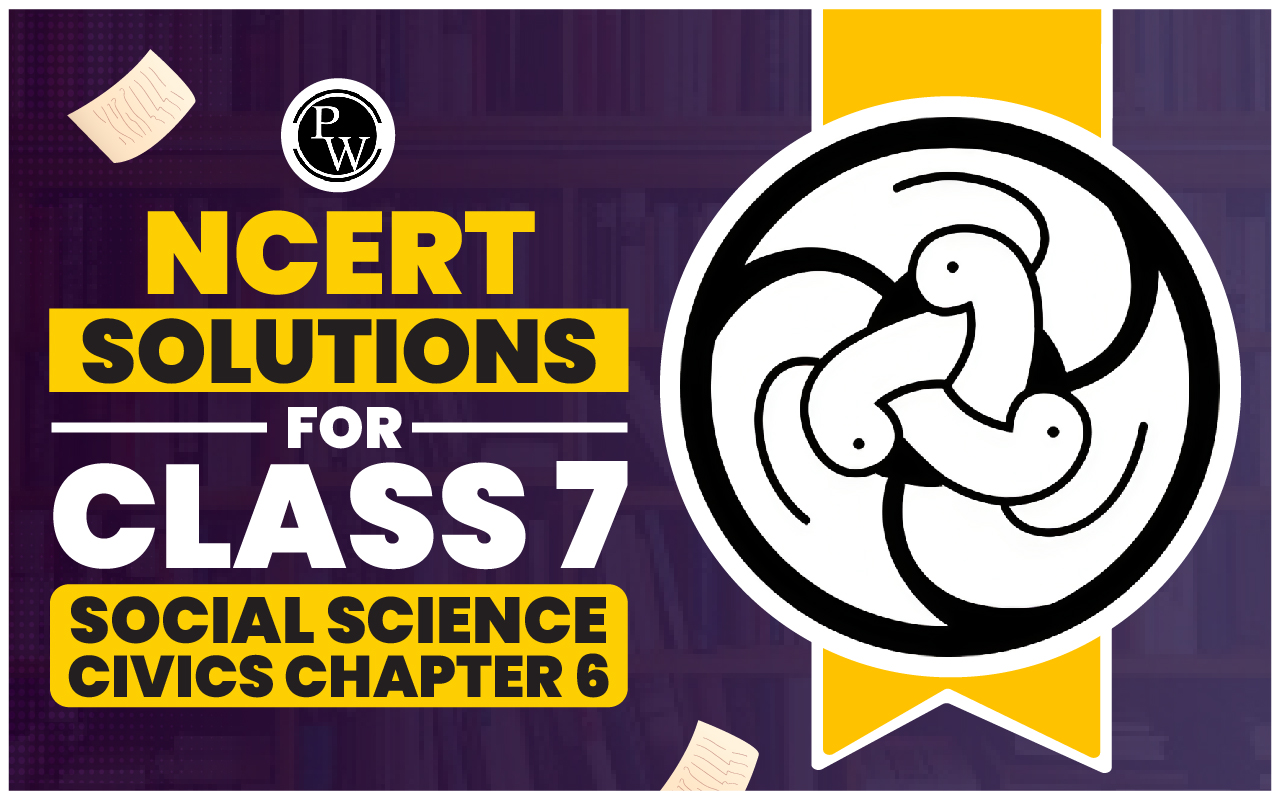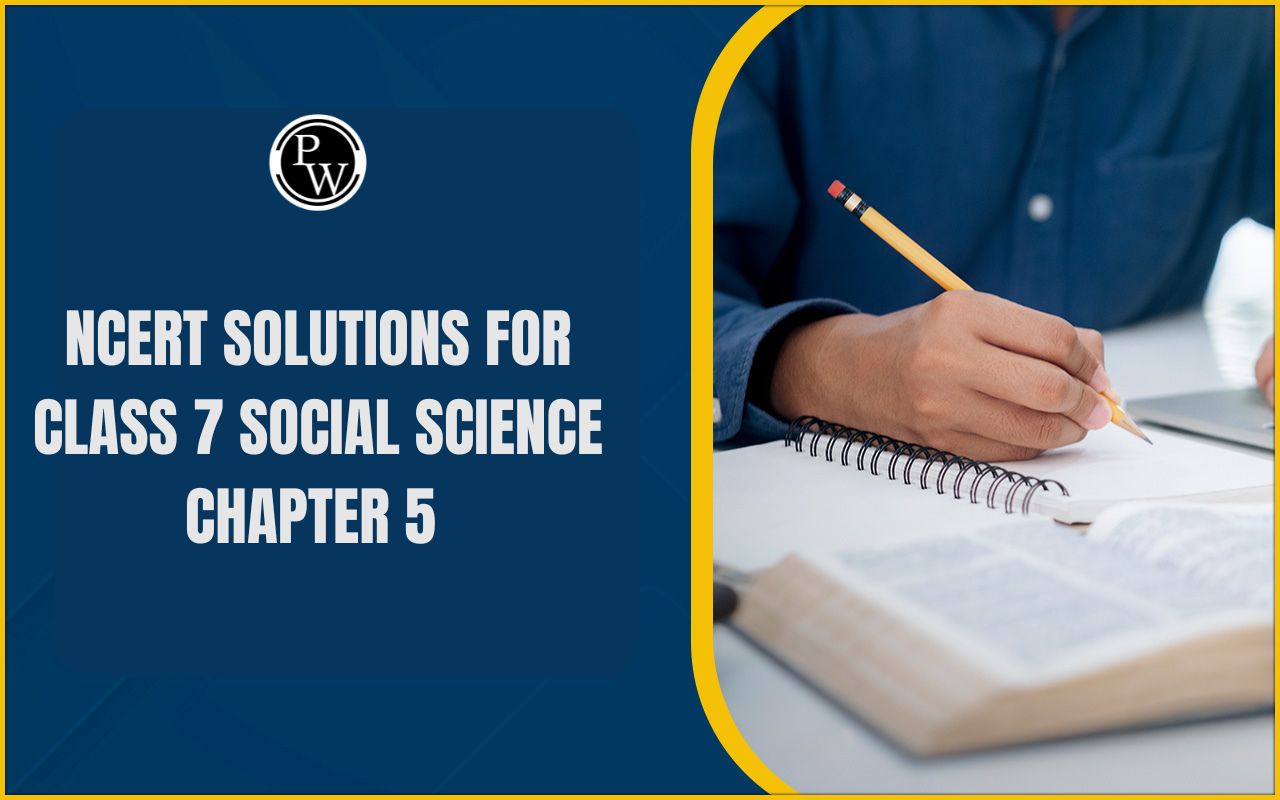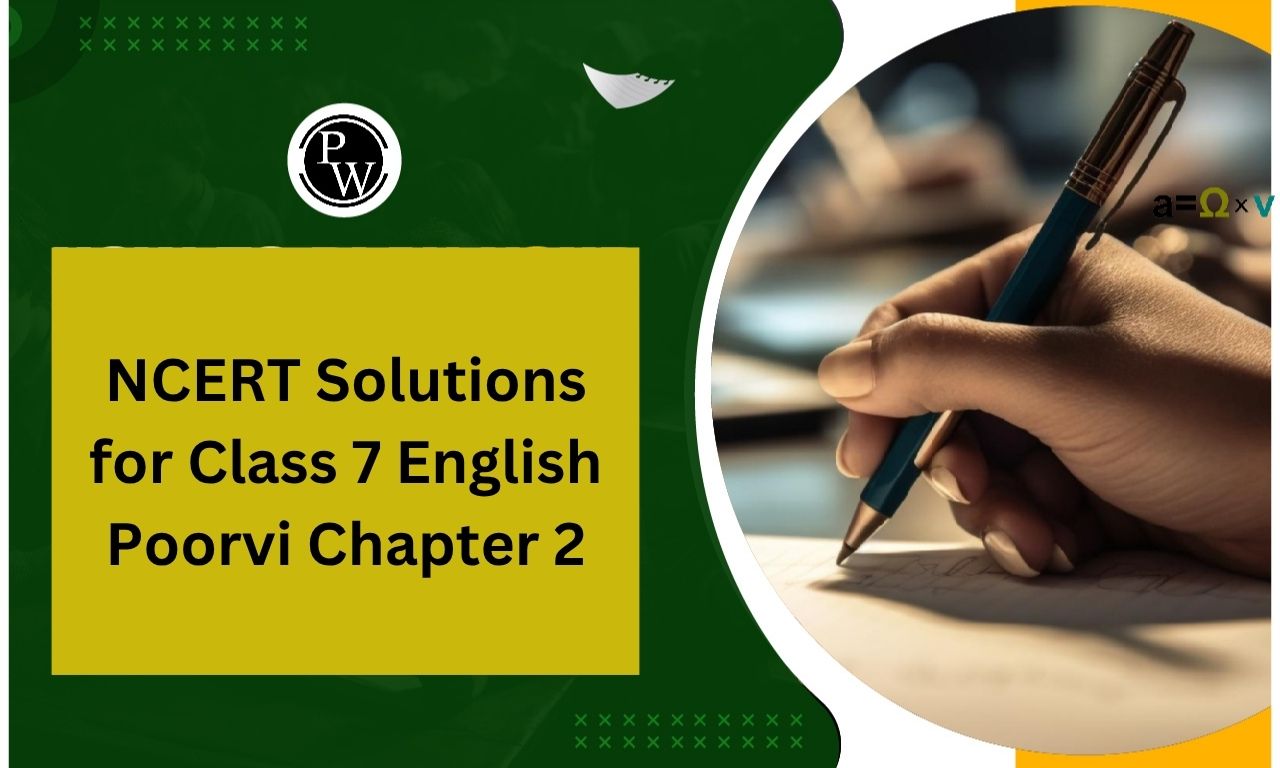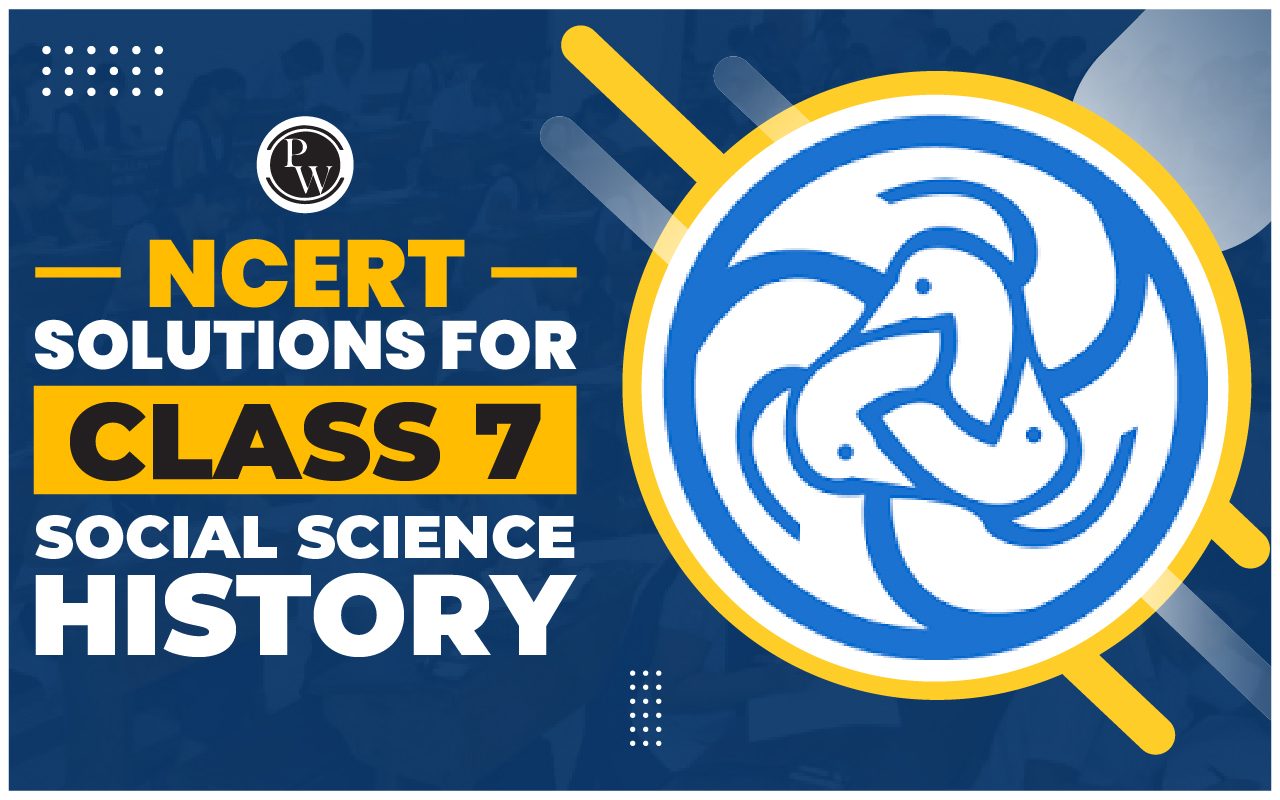

NCERT Solutions for Class 7 Social Science Civics Chapter 6
NCERT Solutions for Class 7 Social Science Civics Chapter 6: The study of Social Science holds great significance for students, offering insights into various aspects of our society. In the NCERT Solutions for Class 7 Social Science Civics Chapter 7, "Understanding Media," students explore diverse forms of media, including radio, television, newspapers, and more.NCERT Solutions for Class 7 Social Science Civics Chapter 6 Overview
In NCERT Solutions for Class 7 Civics Chapter 6, titled "Understanding Media," students encounter multiple questions in the exercise, with answers provided for four of them. The final question involves a project, requiring students to independently work on it. To facilitate effective learning, comprehensive exercise-wise Class 7 NCERT Solutions have been compiled here for students' convenience. This learning strategy is meticulously designed to aid students in mastering the underlying concepts. Regular revision of these solutions, in conjunction with the textbooks, equips students to adeptly respond to any queries posed in their examinations.| CBSE Syllabus Class 7 | |
| CBSE Class 7 English Syllabus | CBSE Class 7 Math Syllabus |
| CBSE Class 7 Social Science Syllabus | CBSE Class 7 Science Syllabus |
NCERT Solutions for Class 7 Social Science Civics Chapter 6 Understanding Media
In this chapter, students are introduced to the concept of media, which encompasses various communication channels. Media serves as a means to disseminate information, including news, music, movies, educational content, and promotional messages. Understanding the diverse forms of media, such as radio, television, newspapers, and the internet, is crucial in comprehending its impact on society.1) Role of Media in Democracy:
The chapter delves into the pivotal role that media plays in a democratic society. Students learn how media acts as a watchdog, keeping a check on the government's actions and promoting transparency. Media is seen as a vital tool in facilitating informed decision-making among citizens, thereby strengthening the democratic fabric.2) Agendas and Media:
An essential aspect covered is how media influences public agendas. Students explore how media outlets can shape public perceptions and priorities by highlighting specific issues. The agenda-setting role of media is discussed, emphasizing its power to bring attention to certain topics and influence public discourse.3) Forms of Media:
The chapter provides insights into the various forms of media, ranging from traditional sources like radio and newspapers to modern platforms like television and the internet. Students understand how each form of media contributes to shaping public opinion and disseminating information in distinct ways.4) Independent Media:
The concept of independent media is explored in the context of a democratic country like India. The chapter discusses the importance of media independence in ensuring unbiased reporting, free from undue influence. Students learn why media autonomy is crucial for a healthy democracy. In summary, this chapter aims to make students aware of the multifaceted role of media in society, its impact on democracy, and the need for media independence. NCERT Solutions for Class 7 Social Science Civics Chapter 6 provide detailed explanations and answers to ensure a comprehensive understanding of the subject matter.CBSE Board Exam Centre List 2024
NCERT Solutions for Class 7 Social Science Civics Chapter 6 Important Questions
Here are the NCERT solutions for class 7 Social Science Civics chapter 6 important questions: 1. What is the significance of technology in shaping the evolution of media? Discuss with examples. Answer: Technology has played a pivotal role in transforming the landscape of media. The advent of the internet, social media platforms, and digital tools has enabled real-time information dissemination. For instance, news websites, blogs, and social media platforms provide instant updates, breaking news, and diverse perspectives. Technology has empowered citizen journalism, allowing individuals to share information globally. 2. Explain the role of money in influencing media content. How does financial support impact the narratives presented by media outlets? Answer: Financial support significantly influences media content. Advertisements and sponsorships contribute to the revenue of media outlets. In some cases, financial interests can affect the choice of stories covered and the tone of reporting. Media outlets may prioritize content that aligns with the interests of their sponsors, potentially impacting the objectivity of news reporting. 3. In what ways does media contribute to the democratic process? Provide examples of how media acts as a watchdog in a democratic society. Answer: Media contributes to the democratic process by serving as a watchdog, scrutinizing government actions and promoting transparency. Investigative journalism exposes corruption, human rights violations, and other issues. For instance, media coverage of political events, elections, and policy debates informs citizens, enabling them to make informed choices and participate actively in the democratic process. 4. Discuss the concept of 'setting agendas' in the context of media. How does media influence public discourse and societal priorities? Answer: Setting agendas refers to the process by which media outlets decide which topics to cover, influencing public discourse. Media shapes societal priorities by emphasizing specific issues. For example, extensive coverage of certain events or topics can lead to increased public awareness and discussion, influencing societal concerns and perspectives. 5. Analyze the impact of advertisements on media content. How do advertisements shape the narratives presented to the audience? Answer: Advertisements impact media content by providing financial support to media outlets. In some cases, content choices may be influenced to attract advertisers. Advertisements can shape narratives by promoting certain values, lifestyles, or products. Media content may be designed to align with the interests of advertisers, potentially impacting the neutrality of information. 6. Explore the challenges faced by media in maintaining independence in a democratic country like India. Answer: Challenges to media independence in democratic countries like India include political pressures, corporate influences, and the threat of censorship. Journalists may face intimidation, and media outlets may be tempted to align with powerful interests. Balancing the need for revenue generation with editorial independence is a constant challenge. 7. How has technology changed the way news is disseminated in contemporary times? Discuss the advantages and disadvantages of these changes.
Answer:
Technology has revolutionized news dissemination by enabling real-time updates, citizen journalism, and global reach. Advantages include faster access to information and diverse perspectives. However, disadvantages include the spread of misinformation, reduced editorial oversight, and challenges in verifying sources.
8. Evaluate the role of media in educating the public and spreading awareness about social issues. Provide examples to support your answer.
Answer:
Media plays a crucial role in educating the public and raising awareness about social issues. Documentaries, news features, and campaigns highlight issues such as climate change, poverty, and human rights abuses. For example, documentaries like "An Inconvenient Truth" have increased awareness about environmental challenges.
9. Why is media literacy important in today's world? How can individuals become more media literate?
Answer:
Media literacy is vital to critically assess and interpret media messages. In today's world, where information is abundant, media literacy helps individuals distinguish between reliable and biased sources. To become more media literate, individuals should develop critical thinking skills, fact-check information, and be aware of media manipulation techniques.
10. Design a project that highlights the role of media in shaping public opinion on a specific issue. Include elements that address the ethical considerations in media representation.
Answer: Project Design:
Title - "Media Impact: Shaping Perspectives on Climate Change"
Objective:
Explore how media influences public opinion on climate change and assess the ethical considerations in media representation.
7. How has technology changed the way news is disseminated in contemporary times? Discuss the advantages and disadvantages of these changes.
Answer:
Technology has revolutionized news dissemination by enabling real-time updates, citizen journalism, and global reach. Advantages include faster access to information and diverse perspectives. However, disadvantages include the spread of misinformation, reduced editorial oversight, and challenges in verifying sources.
8. Evaluate the role of media in educating the public and spreading awareness about social issues. Provide examples to support your answer.
Answer:
Media plays a crucial role in educating the public and raising awareness about social issues. Documentaries, news features, and campaigns highlight issues such as climate change, poverty, and human rights abuses. For example, documentaries like "An Inconvenient Truth" have increased awareness about environmental challenges.
9. Why is media literacy important in today's world? How can individuals become more media literate?
Answer:
Media literacy is vital to critically assess and interpret media messages. In today's world, where information is abundant, media literacy helps individuals distinguish between reliable and biased sources. To become more media literate, individuals should develop critical thinking skills, fact-check information, and be aware of media manipulation techniques.
10. Design a project that highlights the role of media in shaping public opinion on a specific issue. Include elements that address the ethical considerations in media representation.
Answer: Project Design:
Title - "Media Impact: Shaping Perspectives on Climate Change"
Objective:
Explore how media influences public opinion on climate change and assess the ethical considerations in media representation.
Elements:
- Conduct a content analysis of news articles, opinion pieces, and advertisements related to climate change in mainstream media.
- Interview journalists, editors, and climate scientists to understand the editorial process and decision-making in climate change coverage.
- Create a documentary highlighting diverse perspectives on climate change, incorporating expert opinions, community voices, and global perspectives.
- Organize a panel discussion on media ethics, featuring industry experts and media scholars.
- Develop guidelines for responsible climate change reporting, emphasizing accuracy, balance, and transparency.
NCERT Solutions for Class 7 Social Science Civics Chapter 6 Long & Short Questions and Answers
Let's cover some long and short questions from Chapter 6 of Class 7 Social Science Civics.Long Answer Questions:
1) Explain the role of media in a democracy. Media in a democracy plays a multifaceted role. Firstly, it acts as a watchdog by critically analyzing and scrutinizing government actions and policies. Secondly, it serves as a bridge between the government and the citizens, providing information and shaping public opinion. Thirdly, it helps in setting agendas by deciding which issues are important and should be highlighted. Overall, media promotes transparency, accountability, and informed citizen participation. 2) Discuss the influence of big business on media. Big businesses significantly influence media through advertising. Corporations pay media outlets to advertise their products, making it a powerful tool for influencing consumer choices. This influence can impact the content and tone of media coverage, sometimes prioritizing the interests of advertisers over unbiased reporting. 3) Explore the historical evolution of media's role in democracy. The historical evolution of media in democracy can be traced through various phases. Initially, newspapers and print media played a crucial role in shaping public opinion during key historical events. The emergence of radio in the early 20th century brought real-time information to a wider audience, fostering a sense of connectivity. The advent of television further revolutionized the media landscape, enabling visual storytelling and enhancing the impact of news. In recent decades, the digital age has witnessed an exponential increase in the influence of online media. The internet, social media, and digital platforms have democratized information dissemination, allowing for greater citizen participation. However, it has also posed challenges such as misinformation and the echo-chamber effect. 4) Analyze the challenges faced by media in maintaining independence. Media independence faces numerous challenges in contemporary times. One major challenge is corporate influence, as media outlets rely on advertising revenue, making them susceptible to the interests of powerful corporations. Political pressures also pose a threat to independence, with governments attempting to control narratives and limit dissent. Economic dependencies, where media organizations are financially tied to specific stakeholders, can compromise impartiality. Additionally, the rise of digital platforms has led to concerns about misinformation and sensationalism, impacting the credibility of media sources. To counter these challenges, media organizations must prioritize ethical journalism, ensure editorial independence, and diversify revenue sources to reduce dependency on specific interests. 5) Examine the impact of media on shaping public opinion during elections. Media plays a pivotal role in shaping public opinion during elections. Through news coverage, political debates, and advertisements, media influences voter perceptions and electoral outcomes. Positive coverage can enhance a candidate's image, while negative reporting may lead to public skepticism. The introduction of 24/7 news cycles and social media has accelerated the dissemination of information, making media an influential force in electoral dynamics. However, media bias, fake news, and echo-chamber effects can distort public perception. Journalistic responsibility and fact-checking mechanisms are essential to maintain the integrity of media influence during elections. 6) Discuss the ethical considerations in media reporting. Ethical considerations in media reporting encompass a range of issues. Balancing the right to privacy against the public's right to know is a critical ethical dilemma. Journalists must navigate issues of sensitivity, avoiding harm and ensuring the accuracy of information. Objectivity and impartiality are central ethical principles. Journalists should strive to present multiple perspectives and avoid favoritism. Additionally, avoiding sensationalism, respecting diversity, and disclosing conflicts of interest contribute to ethical reporting. Media organizations often adopt codes of ethics to guide journalistic practices, emphasizing the importance of truth, accuracy, and accountability. Ethical reporting enhances public trust in the media and upholds its role as a responsible information source. 7) Evaluate the role of social media in modern democracy. The role of social media in modern democracy is multifaceted. On one hand, social media facilitates real-time information sharing, political engagement, and mobilization. It provides a platform for diverse voices, fostering inclusivity and participatory democracy. However, challenges arise in terms of misinformation, echo chambers, and the spread of polarizing content. Social media algorithms may contribute to information bubbles, limiting exposure to diverse perspectives. Instances of online harassment and the potential manipulation of public opinion through social media platforms highlight the complexities of its role in democracy. Efforts to mitigate these challenges include fact-checking initiatives, algorithm transparency, and digital literacy campaigns. A balanced approach acknowledges the positive and negative impacts of social media, emphasizing its potential for enhancing democratic discourse while addressing associated risks.NCERT Solutions for Class 7 Social Science Civics Chapter 6 PDF
Short Answer Questions:
1) What is the concept of 'Setting Agendas' in media? Setting agendas refers to the media's power to decide which issues are important and should be given prominence. It involves selecting, emphasizing, and presenting news stories that influence public opinion and discussions. 2) How does media 'set the agenda' in a democracy? In a democracy, media sets the agenda by choosing what news stories to highlight and how to present them. By focusing on specific issues, the media shapes public opinion, influences discussions, and impacts the political discourse, playing a crucial role in shaping the priorities of the public. 3) Define media agenda setting. Media agenda setting refers to the process by which news outlets decide which topics and issues are deemed significant and deserve public attention. 4) What role does media play in promoting transparency? Media promotes transparency by scrutinizing government actions, exposing corruption, and providing information that allows citizens to make informed decisions. 5) Explain the term 'watchdog of democracy' in relation to the media. The term 'watchdog of democracy' signifies the media's role in monitoring government activities, ensuring accountability, and safeguarding democratic principles. 6) How can big businesses influence media content? Big businesses can influence media content through advertising, as they financially support media outlets in exchange for promoting their products or services. 7) What is the significance of media independence in a democratic country? Media independence is crucial in a democracy as it ensures unbiased reporting, free from external pressures, allowing citizens to receive diverse and accurate information. 8) Give an example of media setting the agenda. An example of media agenda setting is when news outlets extensively cover a particular social issue, influencing public perception and policymakers' priorities. 9) How does media influence public opinion in a democracy? Media influences public opinion by framing issues, presenting diverse perspectives, and shaping narratives that can impact the way people perceive certain events or policies. 10) Why is it important for media to be neutral and impartial? Neutrality and impartiality in media are essential to ensure fair reporting, prevent bias, and maintain public trust in the information provided. 11) Discuss one positive impact of media activism. Media activism can raise awareness about social issues, mobilize public support, and pressure authorities to address concerns, leading to positive social change. 12) Explain the role of media in educating the masses. Media educates the masses by providing information on various subjects, fostering awareness, and promoting critical thinking skills among the audience.NCERT Solutions for Class 7 Social Science Civics Chapter 6 Summary
Chapter 6 of NCERT Class 7 Social and Political Life – II, titled "Understanding Media," delves into the intricate relationship between media and society. It explores how media, encompassing various platforms and technologies, influences public opinion, shapes agendas, and plays a crucial role in a democratic setup.- Media and Technology: The chapter begins by elucidating the symbiotic relationship between media and technology. It emphasizes how technological advancements have transformed the landscape of media, from traditional forms like newspapers and radio to modern platforms like television and the internet. Students gain insights into the evolving nature of media in response to technological innovations.
- Media and Money: An essential aspect covered is the intersection of media and finances. The chapter delves into the economic aspects of media, highlighting the role of money in shaping media content. Students explore how funding, advertisements, and financial considerations can influence the narratives presented by different media outlets.
- Media and Democracy: The chapter then navigates through the intricate connection between media and democracy. Students learn how media acts as a cornerstone in democratic societies by providing information, shaping public opinion, and holding those in power accountable. The role of media as a watchdog and its significance in upholding democratic values are underscored.
- Setting Agendas: A crucial theme explored in the chapter is the ability of media to set agendas. Students understand how media outlets can bring specific issues to the forefront, influencing public discourse and priorities. The power of media in shaping the narrative and drawing attention to certain topics is discussed, emphasizing its impact on societal agendas.
NCERT Solutions for Class 7 Social Science Civics Chapter 6 FAQs
What challenges does media face in maintaining independence?
Media faces challenges such as corporate influence, political pressures, and economic dependencies. Maintaining independence requires ethical journalism, editorial autonomy, and diversification of revenue sources.
What ethical considerations are important in media reporting?
Ethical considerations in media reporting include respecting privacy, ensuring accuracy, objectivity, impartiality, avoiding sensationalism, and disclosing conflicts of interest. Following ethical guidelines upholds journalistic integrity.
How does social media impact democracy?
Social media impacts democracy positively by facilitating real-time information sharing and political engagement. However, challenges like misinformation and echo chambers exist. Efforts to address these challenges include fact-checking and digital literacy initiatives.
Why is media independence crucial in a democratic country?
Media independence is crucial as it ensures unbiased reporting, holds the government accountable, and provides diverse viewpoints. It safeguards democratic values like freedom of expression and the right to information.
Can media influence government policies?
Yes, media can influence government policies by highlighting issues, conducting investigative journalism, and shaping public opinion. Public awareness created by media can impact policy decisions.
🔥 Trending Blogs
Talk to a counsellorHave doubts? Our support team will be happy to assist you!

Free Learning Resources
PW Books
Notes (Class 10-12)
PW Study Materials
Notes (Class 6-9)
Ncert Solutions
Govt Exams
Class 6th to 12th Online Courses
Govt Job Exams Courses
UPSC Coaching
Defence Exam Coaching
Gate Exam Coaching
Other Exams
Know about Physics Wallah
Physics Wallah is an Indian edtech platform that provides accessible & comprehensive learning experiences to students from Class 6th to postgraduate level. We also provide extensive NCERT solutions, sample paper, NEET, JEE Mains, BITSAT previous year papers & more such resources to students. Physics Wallah also caters to over 3.5 million registered students and over 78 lakh+ Youtube subscribers with 4.8 rating on its app.
We Stand Out because
We provide students with intensive courses with India’s qualified & experienced faculties & mentors. PW strives to make the learning experience comprehensive and accessible for students of all sections of society. We believe in empowering every single student who couldn't dream of a good career in engineering and medical field earlier.
Our Key Focus Areas
Physics Wallah's main focus is to make the learning experience as economical as possible for all students. With our affordable courses like Lakshya, Udaan and Arjuna and many others, we have been able to provide a platform for lakhs of aspirants. From providing Chemistry, Maths, Physics formula to giving e-books of eminent authors like RD Sharma, RS Aggarwal and Lakhmir Singh, PW focuses on every single student's need for preparation.
What Makes Us Different
Physics Wallah strives to develop a comprehensive pedagogical structure for students, where they get a state-of-the-art learning experience with study material and resources. Apart from catering students preparing for JEE Mains and NEET, PW also provides study material for each state board like Uttar Pradesh, Bihar, and others
Copyright © 2025 Physicswallah Limited All rights reserved.
Get App










